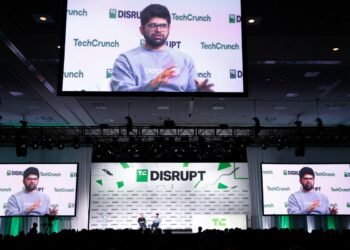
Vector databases (DBs), once specialist research instruments, have become widely used infrastructure in just a few years. They power today's semantic search, recommendation engines, anti-fraud measures and gen AI applications across industries. There are a deluge of options: PostgreSQL with pgvector, MySQL HeatWave, DuckDB VSS, SQLite VSS, Pinecone, Weaviate, Milvus and several others.
The riches of choices sound like a boon to companies. But just beneath, a growing problem looms: Stack instability. New vector DBs appear each quarter, with disparate APIs, indexing schemes and performance trade-offs. Today's ideal choice may look dated or limiting tomorrow.
To business AI teams, volatility translates into lock-in risks and migration hell. Most projects begin life with lightweight engines like DuckDB or SQLite for prototyping, then move to Postgres, MySQL or a cloud-native service in production. Each switch involves rewriting queries, reshaping pipelines, and slowing down deployments.
This re-engineering merry-go-round undermines the very speed and agility that AI adoption is supposed to bring.
Why portability matters now
Companies have a tricky balancing act:
-
Experiment quickly with minimal overhead, in hopes of trying and getting early value;
-
Scale safely on stable, production-quality infrastructure without months of refactoring;
-
Be nimble in a world where new and better backends arrive nearly every month.
Without portability, organizations stagnate. They have technical debt from recursive code paths, are hesitant to adopt new technology and cannot move prototypes to production at pace. In effect, the database is a bottleneck rather than an accelerator.
Portability, or the ability to move underlying infrastructure without re-encoding the application, is ever more a strategic requirement for enterprises rolling out AI at scale.
Abstraction as infrastructure
The solution is not to pick the "perfect" vector database (there isn't one), but to change how enterprises think about the problem.
In software engineering, the adapter pattern provides a stable interface while hiding underlying complexity. Historically, we've seen how this principle reshaped entire industries:
-
ODBC/JDBC gave enterprises a single way to query relational databases, reducing the risk of being tied to Oracle, MySQL or SQL Server;
-
Apache Arrow standardized columnar data formats, so data systems could play nice together;
-
ONNX created a vendor-agnostic format for machine learning (ML) models, bringing TensorFlow, PyTorch, etc. together;
-
Kubernetes abstracted infrastructure details, so workloads could run the same everywhere on clouds;
-
any-llm (Mozilla AI) now makes it possible to have one API across lots of large language model (LLM) vendors, so playing with AI is safer.
All these abstractions led to adoption by lowering switching costs. They turned broken ecosystems into solid, enterprise-level infrastructure.
Vector databases are also at the same tipping point.
The adapter approach to vectors
Instead of having application code directly bound to some specific vector backend, companies can compile against an abstraction layer that normalizes operations like inserts, queries and filtering.
This doesn't necessarily eliminate the need to choose a backend; it makes that choice less rigid. Development teams can start with DuckDB or SQLite in the lab, then scale up to Postgres or MySQL for production and ultimately adopt a special-purpose cloud vector DB without having to re-architect the application.
Open source efforts like Vectorwrap are early examples of this approach, presenting a single Python API to Postgres, MySQL, DuckDB and SQLite. They demonstrate the power of abstraction to accelerate prototyping, reduce lock-in risk and support hybrid architectures employing numerous backends.
Why businesses should care
For leaders of data infrastructure and decision-makers for AI, abstraction offers three benefits:
Speed from prototype to production
Teams are able to prototype on lightweight local environments and scale without expensive rewrites.
Reduced vendor risk
Organizations can adopt new backends as they emerge without long migration projects by decoupling app code from specific databases.
Hybrid flexibility
Companies can mix transactional, analytical and specialized vector DBs under one architecture, all behind an aggregated interface.
The result is data layer agility, and that's more and more the difference between fast and slow companies.
A broader movement in open source
What's happening in the vector space is one example of a bigger trend: Open-source abstractions as critical infrastructure.
-
In data formats: Apache Arrow
-
In ML models: ONNX
-
In orchestration: Kubernetes
-
In AI APIs: Any-LLM and other such frameworks
These projects succeed, not by adding new capability, but by removing friction. They enable enterprises to move more quickly, hedge bets and evolve along with the ecosystem.
Vector DB adapters continue this legacy, transforming a high-speed, fragmented space into infrastructure that enterprises can truly depend on.
The future of vector DB portability
The landscape of vector DBs will not converge anytime soon. Instead, the number of options will grow, and every vendor will tune for different use cases, scale, latency, hybrid search, compliance or cloud platform integration.
Abstraction becomes strategy in this case. Companies adopting portable approaches will be capable of:
-
Prototyping boldly
-
Deploying in a flexible manner
-
Scaling rapidly to new tech
It's possible we'll eventually see a "JDBC for vectors," a universal standard that codifies queries and operations across backends. Until then, open-source abstractions are laying the groundwork.
Conclusion
Enterprises adopting AI cannot afford to be slowed by database lock-in. As the vector ecosystem evolves, the winners will be those who treat abstraction as infrastructure, building against portable interfaces rather than binding themselves to any single backend.
The decades-long lesson of software engineering is simple: Standards and abstractions lead to adoption. For vector DBs, that revolution has already begun.
Mihir Ahuja is an AI/ML engineer and open-source contributor based in San Francisco.


















